At the back of Sumiyoshi Shrine in Osaka is a small shrine called Nankun Jinja. It seems to be part of Sumiyoshi, yet it’s independent at the same time. The priest explained to me it was a massha (an auxiliary under the management of a larger shrine) and it has its own ujiko (parishioners).
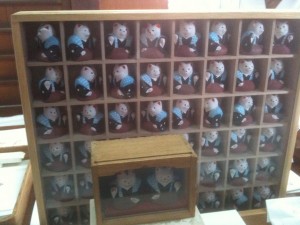
A full collection of 48 maneki cats. Those with the left arm raised are beckoning people; those with the right raised beckon money.
It’s unusual in a number of ways. First because the shrine’s goshintai (spirit-body) is a camphor tree (see picture on the left).
Secondly because the shrine sells small maneki cats, which are collected each month by worshippers at the shrine in a set of 48. (At Y500 a cat, over four years that works out at Y24,000.) I was only about ten or fifteen minutes at the shrine, but there must have been four or five elderly people who came in to buy them during that time. Apparently at least sixty people a day come in to buy one.
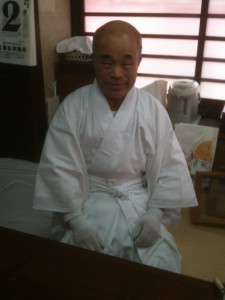 But perhaps the most remarkable aspect of the tiny shrine is the resident priest, who took time out from his duties to tell me his life story. Born in Kyoto, he did engineering at Kyoto University before taking a job with an electricity company for whom he did PR work. He happened to marry the daughter of the head priest of Sumiyoshi Shrine, but had little interest in the religion until nearing retirement one of the priests at the shrine encouraged him to consider working there and helping out.
But perhaps the most remarkable aspect of the tiny shrine is the resident priest, who took time out from his duties to tell me his life story. Born in Kyoto, he did engineering at Kyoto University before taking a job with an electricity company for whom he did PR work. He happened to marry the daughter of the head priest of Sumiyoshi Shrine, but had little interest in the religion until nearing retirement one of the priests at the shrine encouraged him to consider working there and helping out.
Accordingly he did monthly courses at Kogakkan University while doing on the job training. Cold water austerity, sitting long periods of seiza (on one’s knees), memorising prayers and movements were all rigorous activities for someone who’d worked in comfortable warm offices all his life. ‘Taihen desu yo,’ (Terrible) he said cheerfully. I got the feeling, despite the cold, he was enjoying his new work.
Sumiyoshi Jinja is a remarkable place with historical associations and unique features. Well worth a visit. It stood once by the sea and was celebrated for the beauty of its beach setting. Not much sign of that now, though. Nonetheless there’s a most attractive layout.
It’s got four separate main prayer halls; a rabbit water basin (after the supposed founding on the day of the rabbit); a fancy headdress for the miko which features pine and crane (celebrated in verse and a Noh play); a taiko style bridge which must be the most exaggerated I’ve seen (to denote passing from one realm to another); a mirror-hole through which one worships towards Ise; and good luck fortune pebbles for which you have to search in order to fill up your good luck pouch. Pictures follow below….
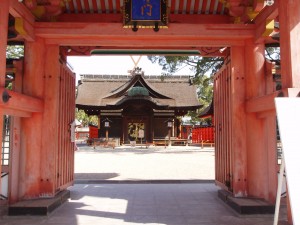
Entrance to Sumiyoshi, and one of the four main shrines
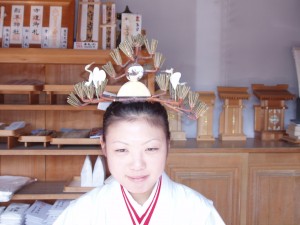
Miko with pine and crane headdress
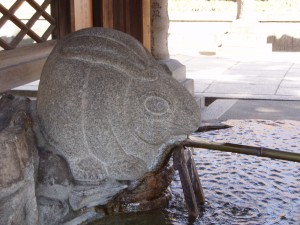
Rabbit temizuya. Unusual, if not unique, to get water from a rabbit.
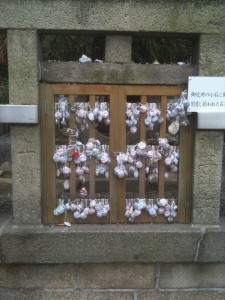
Small bags with lucky pebble stones
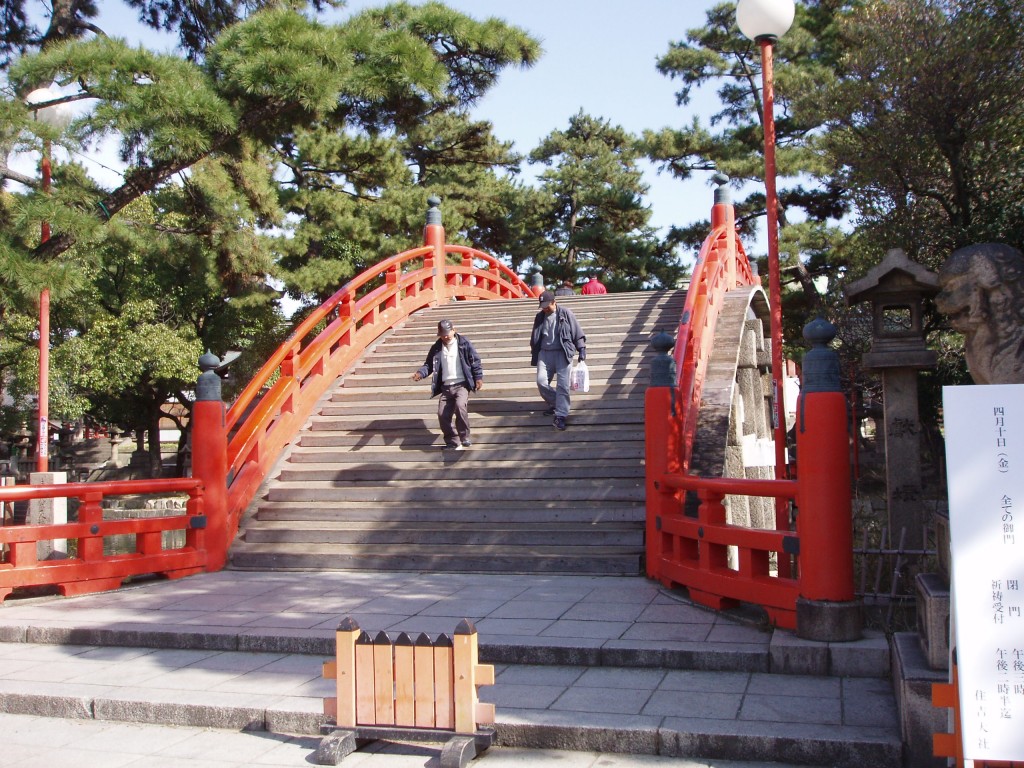
Taiko bashi: it's a steep climb from one realm to the other
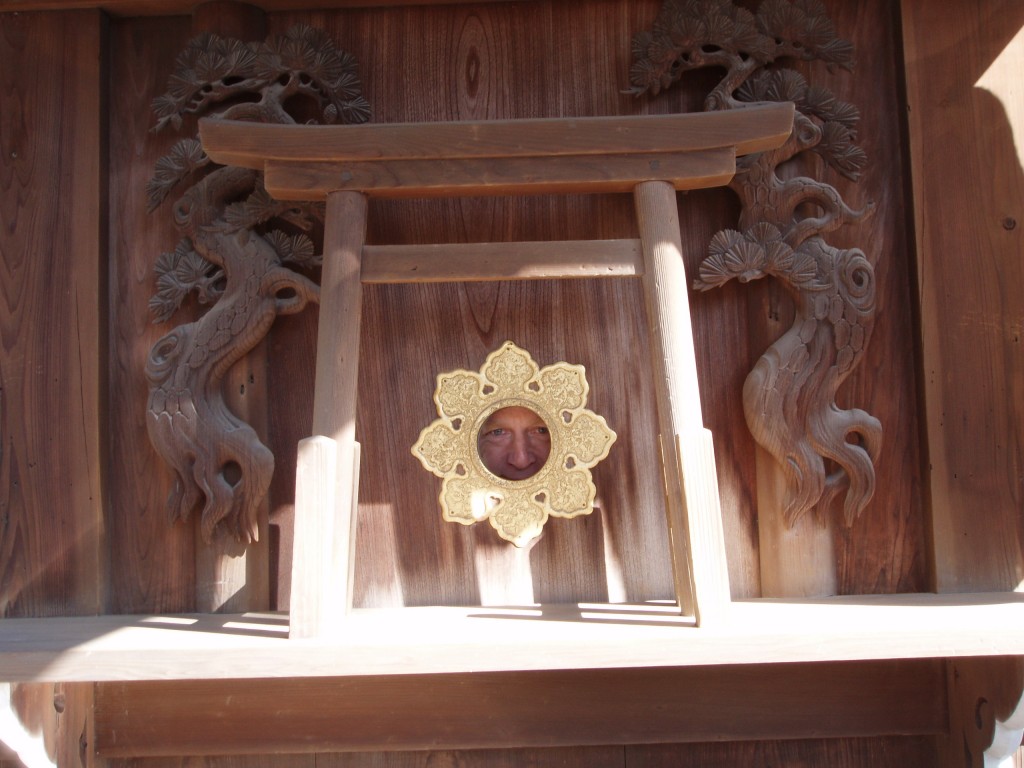
That's no mirror; that's a hole that looks all the way to Ise.
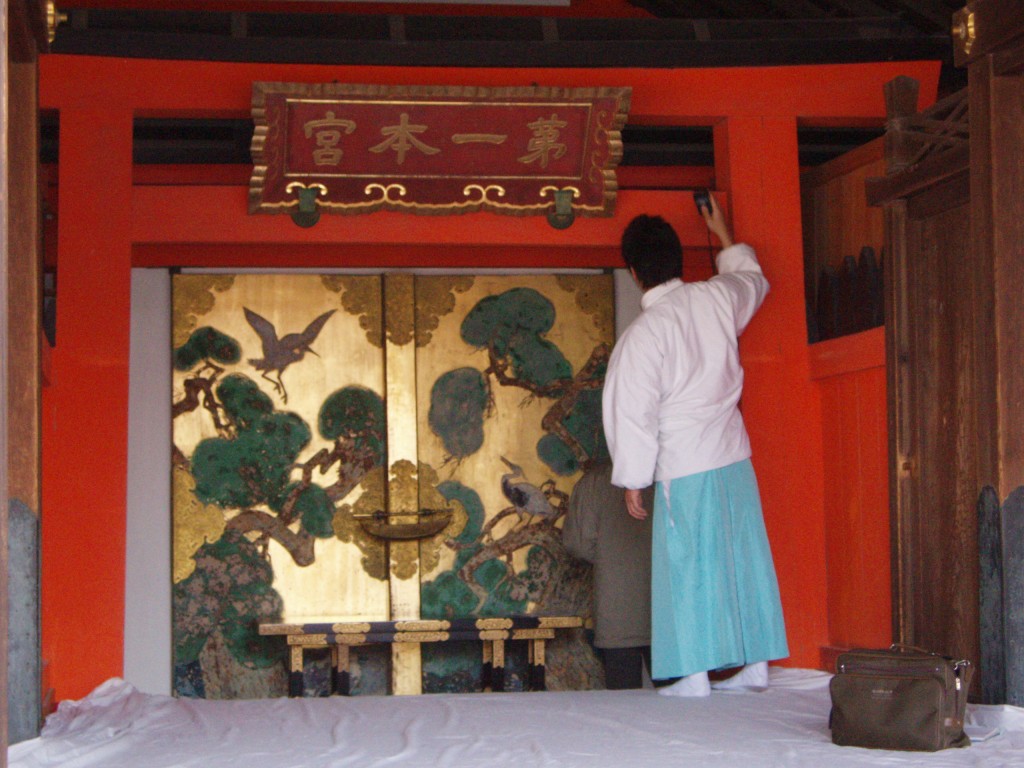
Painted doors inside the first of the Hongu

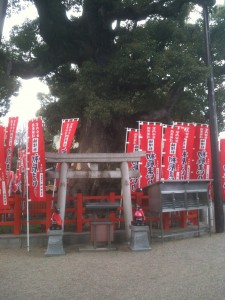
Leave a Reply